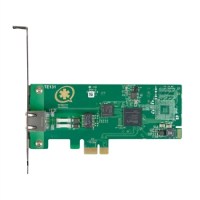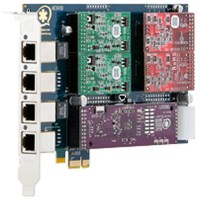Deployment
1. Always connect Cyberoam WAN interface with a Router via a switch and NOT with cross over cable to avoid
autonegotiation problem between Cyberoam WAN interface and Router.
2. By default, Cyberoam sends periodic Ping requests to its default gateway to check connectivity to Internet. It is
recommended to change this setting so that Cyberoam sends Ping requests
to a host on the Internet that is permanently running or most reliable,
like 8.8.8.8 or 4.2.2.2.
3. If users have browser based proxy settings, make sure configured HTTP proxy port is same in both Cyberoam
and desktop browser. By default, Cyberoam is configured for port 3128.
4. For security purposes, Gateway mode is preferred because it uses NAT Policies to secure private addresses of
internal or DMZ networks.
5. If Cyberoam is deployed in Bridge Mode:
• Do not configure Cyberoam IP address as Gateway IP address. If this happens, users will not be able to access
the Internet.
• Do not terminate both ports in the same L2 switch. The switch would become instable if it receives packets of
same MAC address from more than one switch ports.
6. It is recommended to use the High Availability feature of Cyberoam for maximum network uptime.
Note:
This feature is not available in models CR15i, CR15wi, CR25wi, CR35wi, CR15iNG, CR15wiNG, CR25wiNG/6P and CR35wiNG.
7. In case of wireless networks, ensure maximum security by using WPA or WPA2 protocols rather than WEP.
8. Do not broadcast the SSID of your wireless networks to avoid unauthorized users from entering into the network.
Administration
1. Access to Cyberoam should be carefully monitored and protected. This can be done by changing the default
administration settings like:
o Administrator Passwords
o Port used to access Appliance
o Access Protocols (Use secure protocols like SSH and HTTPS)
2. Create multiple administrator profiles for special-purpose administrators like VPN Administrator, Security Administrator,
Audit Administrator, etc. Each administrator should be assigned only the required permissions according to his role in the
organization.
3. It is recommended to disable administrative access to Cyberoam from all zones except the internal LAN zone or
management zone. Even from LAN or management zone, use secured protocols like HTTPS and SSH for GUI and
CLI access.
4. Check regularly for firmware releases and upgrade Cyberoam to the latest firmware available.
5. Take regular backup of Cyberoam. Also, make sure you take a backup before any changes are to be made in the
configuration of the appliance.
6. Test your firewall rules and policies regularly.
7. Conduct internal audits to check the health of the appliance.
8. Enable Login security in terms of:
o Enabling password complexity for the administrator.
o Restricting number of login attempts to prevent brute force attack.
1. Create Firewall rule for DNS IP Address if desktops are configured with a public DNS IP address.
2. Create
firewall rule to allow required and critical traffic across each zone
because, by default, complete traffic across each zone
is dropped by Cyberoam, except for LAN to WAN traffic. This will be applicable in both bridge and gateway mode. For example,
if Mail server is placed in the DMZ zone, then Cyberoam will not allow access of Mail server from LAN and WAN zone.
o To access specific applications running on mail server, create necessary firewall rule from each zone.
o Create firewall rule to give external world access to the Mail server.
3. Create
Firewall rule to allow access to and from applications running on DMZ
as, by default, entire traffic from LAN to DMZ is dropped.
4.
If Cyberoam is configured in Bridge mode and DHCP server is running in
WAN zone of Cyberoam then create firewall rule to allow
packets from DHCP server to LAN to lease IP addresses on desktop.
5. If
MX IP is bound to the WAN port of Cyberoam, create NAT and Virtual Host
rules to map the private IP address of mail server with the MX IP.
6.
If the LAN zone has Routed Networks, then create static routes in
Cyberoam to forward requests to and from the Routed Networks over
the Internet.
7. If Cyberoam is configured for multiple Internet Service Providers i.e. multiple gateways then:o
To improve browsing speed and reduce latency, create a firewall rule to
route the DNS IP address requests through a specific Gateway. For
example, if DNS IP address is from ISP1 and DNS request is going from
ISP2 then latency will increase and time taken to resolve the site
name will also increase.
o If access to certain application like VPN application, SAP or ERP
application is allowed from specific IP address, create firewall rule to
route
the application request from the specific IP address only.
o
Create a NAT policy to bind the Mail Server IP Address with MX IP. This
will establish connection as well as reduce chances of return
MX check problem.
8. It is recommended to bypass DoS
screening for traffic-intensive servers like VOIP and FTP to avoid
dropping of legitimate traffic.
9. Disable NAT policies for WAN to LAN rule for Mail Server to avoid making it an open relay.
Authentication
1.
If Cyberoam is integrated with one or more external authentication
servers, make sure the servers are selected for firewall authentication
and
are in the order of preference.
2. In case of AD
integration with Single Sign On enabled, create clientless users for
servers like VOIP server, MFDs, etc. whose manual
authentication is not feasible.
3. After
importing groups from AD, modify the order of the groups according to
preference. Any user, who is a part of multiple groups, will be
mapped to the first matching group on Cyberoam.IPS
1. Create custom IPS policies with relevant signatures to decrease packet latency and improve performance.
2. It
is recommended to apply IPS policy in WAN to LAN firewall rules for
servers hosted in the network to protect them against known
and unknown attacks.
3. IPS policy is not recommended for LAN to WAN traffic, unless it is used to control applications using custom signatures.
VPN
1. Create VPN to LAN firewall rules to enable
Threat Free Tunnelling, i.e., protect the network from malicious traffic
through the VPN tunnel.
In these rules, NAT policies should be disabled to allow access to internal resources.
2. For additional security, use CHAP and MSCHAP Handshaking Protocols for PPTP remote access VPN.
3. If
VPN connectivity is to be configured between a Head Office and multiple
Branch Offices, create a Hub and Spoke VPN configuration,
i.e., create virtual tunnels from each Branch Office directly to the Head Office.
Antivirus
1. For
scanning of HTTP and HTTPS traffic, configure the Scan Mode as “Real
Time” rather than “Batch”. The Real Time scan mode allows
virus scanning of files as soon as their download starts while Batch
scan mode waits for download of the complete file before scanning.
2. Configure Cyberoam to disallow access to HTTPS websites with invalid certificates.
Antispam
1. Configure Cyberoam to “Accept” oversized emails to avoid dropping of emails that might be useful.
2. Enable Spam Digest to allow end users to manage quarantined mails by themselves.
3. Configure Cyberoam to verify IP Reputation of senders of all emails to improve Antispam performance.
QoS
1. Create appropriate QoS policies for mission critical applications.
2. Assign
highest priority to real time traffic like VOIP and lowest priority to
bulky protocols like FTP or P2P file transfer for better managed
bandwidth.






